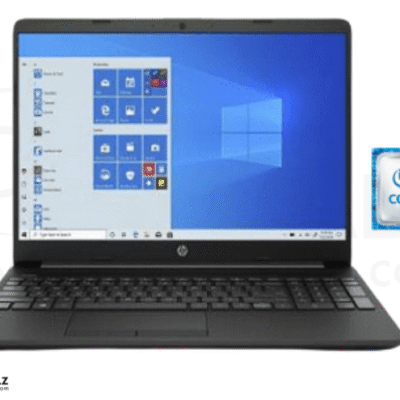Electroencephalography (EEG) has long been a cornerstone of neurological research and clinical practice, providing invaluable insights into brain activity. As technology continues to evolve, so too does the software that supports EEG analysis and interpretation. Recent advancements in neurology software are enhancing the capabilities of researchers and clinicians, making it easier to analyze complex data and derive meaningful conclusions. Here are seven key advancements in EEG and neurology software that you should know about.
1. Enhanced Data Visualization
One of the most significant advancements in neurology software is the improvement in data visualization tools. Modern EEG software now offers sophisticated graphical representations of brain activity, allowing researchers to visualize data in real-time. This includes 3D brain maps, heat maps, and interactive plots that make it easier to identify patterns and anomalies. Enhanced visualization tools help clinicians and researchers quickly interpret results, leading to faster diagnoses and more informed treatment decisions.
2. Machine Learning Integration
The integration of machine learning algorithms into neurology software is revolutionizing the way EEG data is analyzed. These algorithms can automatically detect patterns in brain activity that may be indicative of specific neurological conditions, such as epilepsy or sleep disorders. By training models on large datasets, machine learning can improve the accuracy of diagnoses and reduce the time required for manual analysis. This advancement not only enhances the efficiency of EEG interpretation but also opens new avenues for research into brain function.
3. Real-Time Processing Capabilities
Advancements in computing power have led to the development of neurology software that can process EEG data in real-time. This capability is particularly beneficial in clinical settings, where immediate feedback is crucial. For instance, during surgeries or monitoring sessions, real-time processing allows clinicians to observe brain activity as it happens, enabling them to make timely decisions based on the patient’s condition. This immediacy can be life-saving in critical situations.
4. Cloud-Based Solutions
The rise of cloud computing has transformed how EEG data is stored and shared. Cloud-based neurology software allows researchers and clinicians to access data from anywhere, facilitating collaboration across institutions and geographical boundaries. This accessibility is particularly important for large-scale studies that require input from multiple experts. Additionally, cloud storage provides enhanced security and backup options, ensuring that valuable data is protected against loss.
5. User-Friendly Interfaces
As neurology software becomes more advanced, developers are also focusing on user experience. Modern EEG software often features intuitive interfaces that simplify the analysis process, making it accessible to users with varying levels of expertise. This is particularly important in educational settings, where students and early-career researchers can benefit from user-friendly tools that allow them to focus on learning rather than struggling with complex software. Improved interfaces also reduce the likelihood of errors during data analysis.
6. Integration with Other Modalities
Another significant advancement is the ability of neurology software to integrate EEG data with other imaging modalities, such as functional MRI (fMRI) and magnetoencephalography (MEG). This multimodal approach provides a more comprehensive understanding of brain function by combining the strengths of different imaging techniques. For example, while EEG offers excellent temporal resolution, fMRI provides detailed spatial information. By integrating these modalities, researchers can gain deeper insights into brain activity and connectivity.
7. Open-Source Platforms
The emergence of open-source neurology software platforms, such as Neuromatch, is democratizing access to advanced EEG analysis tools. These platforms allow researchers to collaborate, share code, and contribute to the development of new features. Open-source software fosters innovation by enabling users to customize tools to meet their specific needs. This collaborative approach not only accelerates research but also ensures that high-quality resources are available to a broader audience, regardless of funding or institutional affiliation.
What People Also Ask
What is EEG and how is it used in neurology?
EEG, or electroencephalography, is a technique used to record electrical activity in the brain. It is commonly used in neurology to diagnose conditions such as epilepsy, sleep disorders, and brain injuries. EEG provides real-time data on brain function, making it a valuable tool for both clinical and research purposes.
How has technology improved EEG analysis?
Technology has improved EEG analysis through advancements in data visualization, machine learning integration, real-time processing capabilities, and user-friendly interfaces. These improvements enhance the accuracy and efficiency of EEG interpretation, leading to better patient outcomes.
What are the benefits of cloud-based EEG software?
Cloud-based EEG software offers benefits such as remote access to data, enhanced collaboration among researchers, improved data security, and the ability to store large datasets without the need for extensive local infrastructure.
How does machine learning enhance EEG research?
Machine learning enhances EEG research by automating the detection of patterns in brain activity, improving diagnostic accuracy, and reducing the time required for manual analysis. This technology allows researchers to focus on interpreting results rather than getting bogged down in data processing.
What is Neuromatch and how does it contribute to EEG research?
Neuromatch is an open-source platform that provides resources and tools for computational neuroscience, including EEG analysis. It fosters collaboration among researchers and democratizes access to advanced neurology software, enabling a broader audience to engage in cutting-edge research.
Conclusion
The advancements in EEG and neurology software are transforming the landscape of brain research and clinical practice. From enhanced data visualization and machine learning integration to cloud-based solutions and open-source platforms like Neuromatch, these innovations are making EEG analysis more efficient, accurate, and accessible. As technology continues to evolve, we can expect even more exciting developments that will further enhance our understanding of the brain and improve patient care. For researchers and clinicians alike, staying informed about these advancements is essential for leveraging the full potential of EEG technology in their work.





